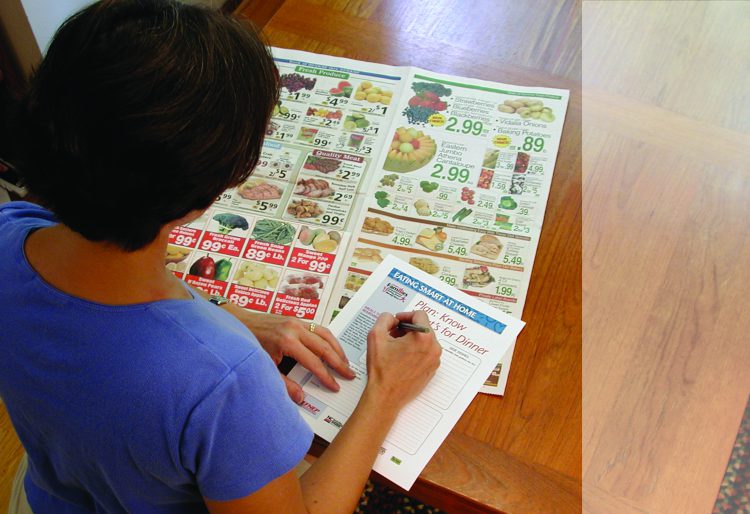Life can get pretty hectic with family, work, school, and other responsibilities. This makes it challenging to prioritize our health. To make it easier to have a healthy diet in the midst of a busy schedule, try these ideas and tips:
- Meal Planning: Schedule time each week to plan what meals you’ll eat that week and your grocery list. Consider the rainbow of fruits and vegetables every week as you plan. This will help ensure you’re getting a variety of nutrients, as each color offers different nutrients your body needs. Also, use weekly grocery store ads and plan meals around
 what’s on sale. Have a list of your family’s go-to meals that you enjoy. Start with some of those meals each week and plan your other meals around those meals. You can try theme meals such as Meatless Monday, Taco Tuesday, Fish Friday, and others that can help you think of a variety of nutritious meals to cook that week. Use a meal planning template like this one to make meal planning easier.
what’s on sale. Have a list of your family’s go-to meals that you enjoy. Start with some of those meals each week and plan your other meals around those meals. You can try theme meals such as Meatless Monday, Taco Tuesday, Fish Friday, and others that can help you think of a variety of nutritious meals to cook that week. Use a meal planning template like this one to make meal planning easier. - Organization & Keeping Stock: Shuffling through your refrigerator and pantry takes time. Keep your food storage organized so you know exactly what food you have on hand, saving valuable time. You can pick up pantry staples when they are on sale to build up your stock and be prepared to cook a meal on short notice. Here are some foods to keep on hand:
- Pantry: oats, brown rice, canned beans, whole wheat pasta, lentils, canned tomato sauce, canned vegetables, canned fruit, canned tuna or salmon, canned chicken, low-sodium soup, nuts and seeds, dried fruit, white vinegar, olive oil, vegetable oil, ground black pepper, garlic powder, cumin, paprika, salt, cinnamon, chili powder, ground ginger, basil, oregano, onion powder, non-stick cooking spray, whole wheat flour, all-purpose flour
- Refrigerator: fruits, vegetables, milk, eggs, cheese, salad greens, yogurt, low-fat mayonnaise, low-sodium soy sauce
- Freezer: chicken, lean ground beef, whole wheat bread, frozen fruit, frozen vegetables
- Prep in Advance: When possible, prepare meals and snacks in advance. For example, snacks like trail mix and hard-boiled eggs can be made in advance and enjoyed throughout the week. When you cook foods like dried beans and brown rice that take longer to cook, cook double and refrigerate or freeze the leftovers. Cut up vegetables like carrots, celery, and cucumber that can be eaten raw and store in containers in the fridge for an easy snack.
- Use Leftovers: Keep leftovers in the front of the fridge where you’ll remember to use them. Rather than throwing out those leftovers that you don’t know what to do with, combine them with another food to make a meal. Doing this saves money because you’re not throwing away the food you bought. For example, use leftover mixed vegetables in an omelet.
- Slow Cooker: Take advantage of a slow cooker, which can do all the cooking of a meal for you. Set up your meal in the morning before work and dinner will be ready for you when you get home at the end of the day. You can also use a slow cooker to cook individual parts of a meal, such as shredded chicken or dry beans. If you use your slow cooker to make red kidney beans, make sure you boil them on the stovetop before finishing cooking in a slow cooker.
When your life gets busy, don’t let healthy eating be another source of stress. Keep it simple with useful tips like these to make healthy eating for your family as easy as possible.
-Cara